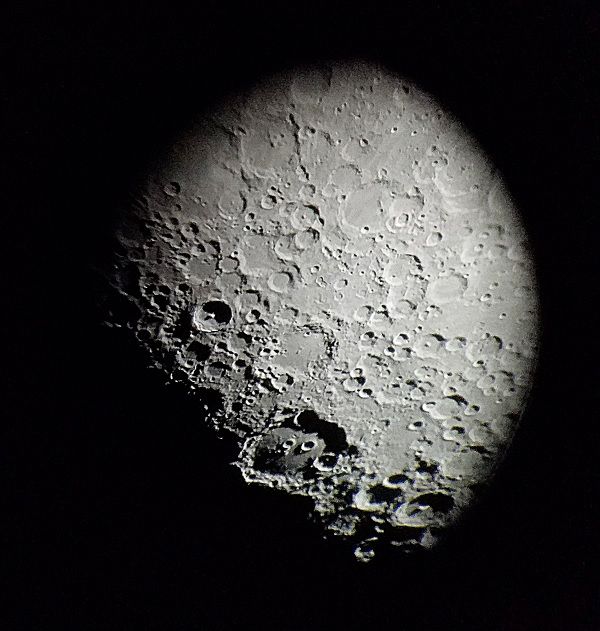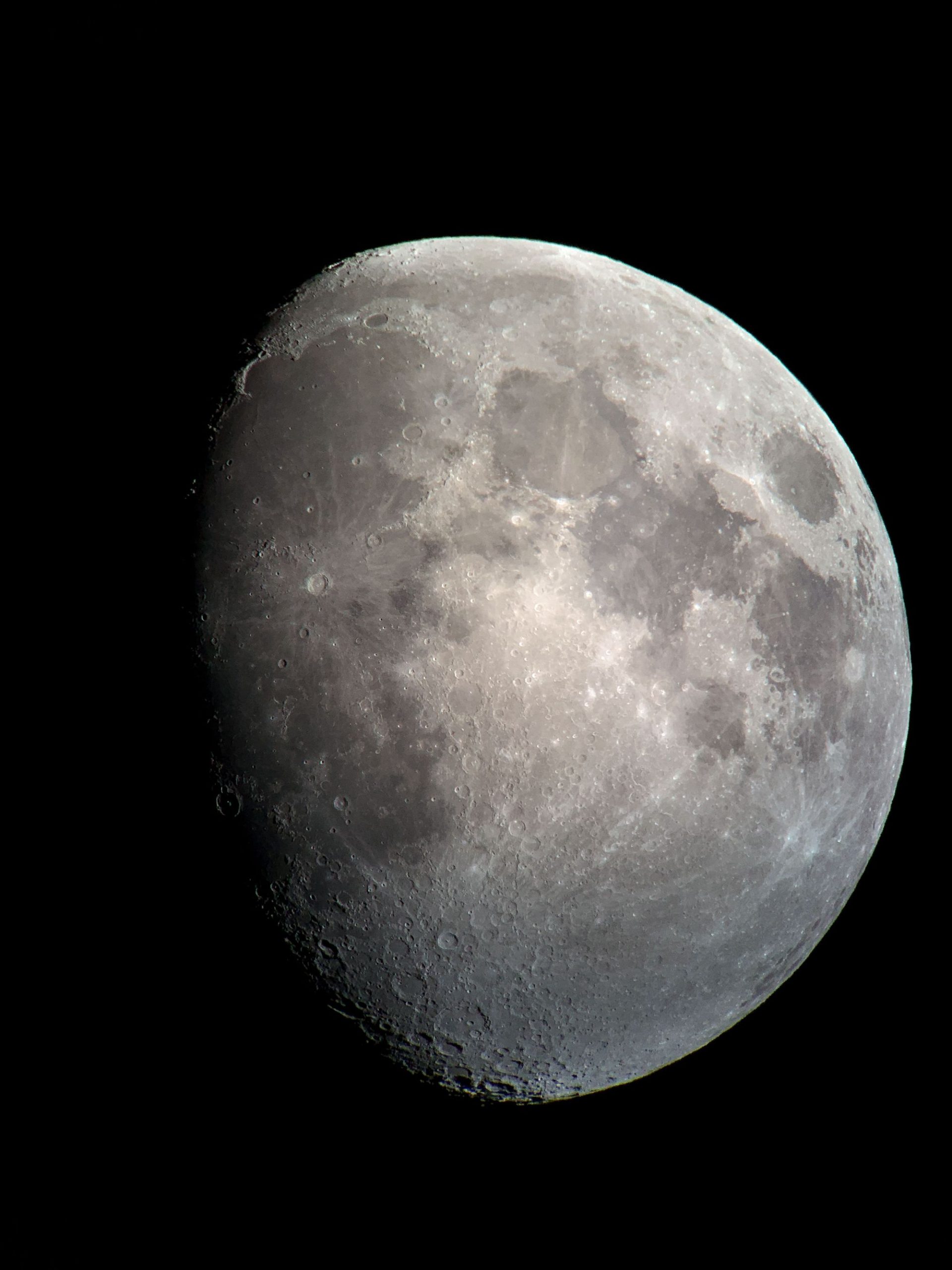When I photographed the Moon on August 30th, I felt now was a good time to start examining it at a closer level. Having only attempted crude drawings of craters previously, I wanted to see how high I could push the magnification of my Dobsonian reflector. So I replaced the 17mm Plossl eyepiece used for the full disc image with a 7.5mm and Barlow lens to see what I could get.
(I should note here that I was using my smartphone for pictures, hence the afocal method of putting the camera directly to the eyepiece.)
With that telescope, this eyepiece setup magnifies about 333 times! Although well within the theoretical maximum for a 254mm aperture, it does present challenges with the atmosphere and, closer to home, vibrations when attempting to get a steady photograph. Many of my attempts came out motion blurry.
The situation presented itself as the ideal opportunity to study the Moon map that came with one of my equipment orders last year. This particular section of the Moon is near its Southern pole. At first, I had no idea what I was looking at, as the map and my image appear a tad different due to shadows. Plus, there are a lot of craters, too many to count!
To pinpoint these specific craters and determine their names, I performed a modified approach to star hopping, but of course for the Moon. Checking the map, I first leveraged the easy large Mare in the North, then from there simply hopped from large crater to large crater, until I arrived at the location of my picture.
In learning these names and locations, I was humbled to realize how little I know about the Moon. I have taken lots of pictures for over a year but have never studied the surface. How does the saying go…I hear but I do not listen? Surely this is the equivalent for sight.
My embarrassment started when I had no idea the famous Tycho crater is sitting right there in my picture. It has that internal shadow with a center protrusion. Below Tycho, the largest crater shown is Clavius, a name I know I have heard before. It has several smaller craters within. Maginus and Moretus are also visible.
Here is the same picture, this time with the craters labeled:
This exercise has kindled a desire for me to learn more about the Moon and truly see it in all its amazing detail. I now know and have seen four craters. Hundreds more are out there waiting!








